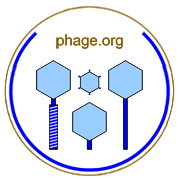

Attachment of a phage to an already phage-infected bacterium.
A phage-infected bacterium, that is, is one that has already been primary adsorbed and infected, whether productively or reductively, and thus a secondary adsorption is a second or additional adsorption. Secondary adsorption, though, may or may not lead to infection and therefore may or may not lead to superinfection, through strictly a secondary adsorption that is followed by superinfection is one route towards coinfection.
Single-step growth experiments are specifically designed to limit secondary adsorption both so that infective centers are not lost (a bacterium adsorbed by one or more phage will still produce, prior to its lysis, only a single plaque) and so that secondary adsorption does not modify the characteristics of an infection. The latter can result from lysis inhibition or lysis from without. A related concern is multiple phage adsorption of bacterial arrangements or clumps, which can give rise to errors in burst size determination.
For precision the concept of adsorption and that of infection should not be confused. Thus, strictly, secondary adsorption and secondary infection are not identical concepts. This distinction, though, was not always the case and so the concept of secondary adsorption in fact was first expressed instead as "secondary infection", which to the best of my knowledge was first expressed by Doermann (1948), p. 259, within the context of studying the lysis inhibition phenomenon: "Addition of potential inhibitors of lysis in the course of the dilutions…—in many cases these inhibitors are phage suspensions and this step will then be referred to as the secondary infection." In that same study, however, the term "secondary adsorption" appears to be employed synonymously, i.e., as on pp. 269 (twice) and 273. Doermann also uses the terms "Secondary exposure" and "Secondary addition".
A number of phage phenomena are associated with secondary adsorption. These include, as already mentioned, superinfection, lysis inhibition, and lysis from without. Also included are superinfection exclusion along with potentially anything associated with coinfection. For further discussion and references, see Abedon (1994).
For more on this topic, see Wikipedia, Google, and PubMed. Contact web master. Return to terms.